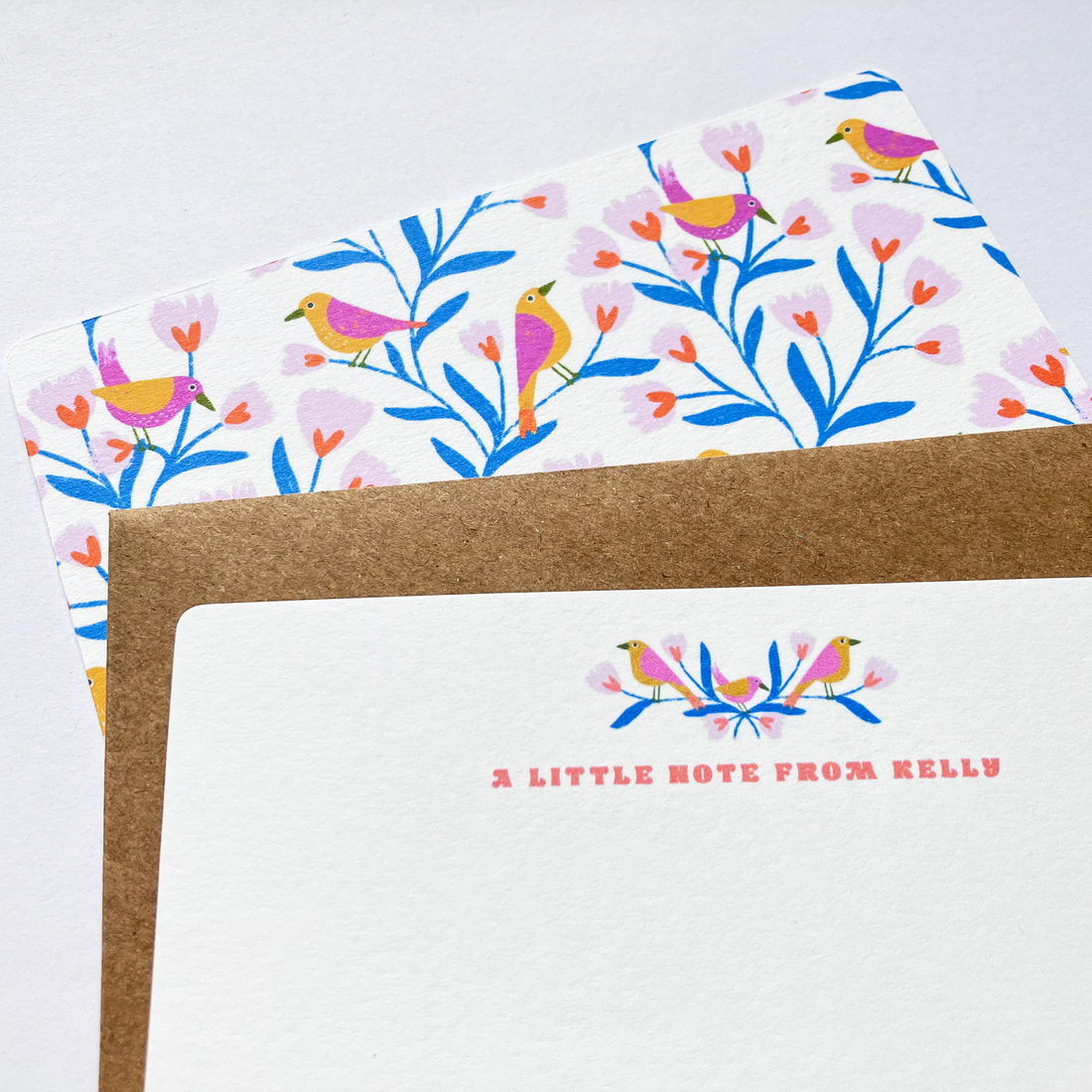
The Timeless Appeal of Personalised Stationery: A Journey Through History
Share
Note cards have a rich and fascinating history dating back centuries. These little pieces of paper have transformed over time from exclusive symbols of wealth and status to cherished tokens of personal expression and connection.
In addition to being a practical tool for personal and professional communication, custom note cards also make a lovely gift for friends and family members who appreciate the art of handwritten notes.
In this post, we'll dive into the evolution of note cards and how they've become and still are an essential part of our lives.
15th - 18th centuries: Origins in Correspondence Culture
Before modern communication methods, such as telephones and emails, handwritten letters were the primary means of correspondence. Wealthy individuals often used personalised stationery, including note cards, to convey messages or express gratitude. These note cards were crafted from high-quality paper and adorned with elaborate designs, monograms, or family crests to signify status and sophistication.
19th century: Industrial Revolution and Mass Production
The Industrial Revolution brought advancements in printing technology, making personalised stationery more accessible to the middle class. Note cards became increasingly popular as a means of communication, especially for formal invitations, thank-you notes, and social correspondence. Mass-produced note cards featured various designs, including floral motifs, landscape illustrations, and geometric patterns.
Late 19th - Early 20th centuries: Golden Age of Stationery
The late 19th and early 20th centuries witnessed a surge in demand for personalised stationery, driven by societal norms emphasising etiquette and social respectability. Companies specialised in producing high-quality stationery, offering a wide range of customisation options, including engraved monograms, embossed borders, and bespoke illustrations. Note cards became essential accessories for expressing one's personal style and social status, particularly among the upper class.
Mid-20th Century to Present
With the rise of electronic communication in the latter half of the 20th century, the popularity of handwritten correspondence declined. However, note cards retained their charm as tangible artefacts of personal expression, cherished for their sentimental value and aesthetic appeal. In recent years, there has been a resurgence of interest in personalised stationery fuelled by nostalgia, craftsmanship, and a desire for tangible connections in an increasingly digital world. Modern note cards often feature contemporary designs, eco-friendly materials, and customisable options to suit individual preferences.
21st century: Digital Age and Customisation
The proliferation of online platforms and digital printing technologies has made it easier than ever for individuals to create custom note cards. Consumers can now design personalised stationery using digital tools, incorporating photos, artwork, and unique messages. Despite the convenience of digital communication, note cards continue to hold sentimental value as tangible artefacts of connection and expression.
No doubt, note cards have come a long way, evolving from exclusive symbols of wealth and status to cherished tokens of personal expression and connection. These little pieces of paper have endured changes in communication technology and societal norms while remaining a timeless and essential part of our lives.
*****
Find your perfect personalised note cards and add a touch of timeless elegance to your communication. Browse our collection today and discover a variety of designs and customisation options to suit your unique style and needs.



